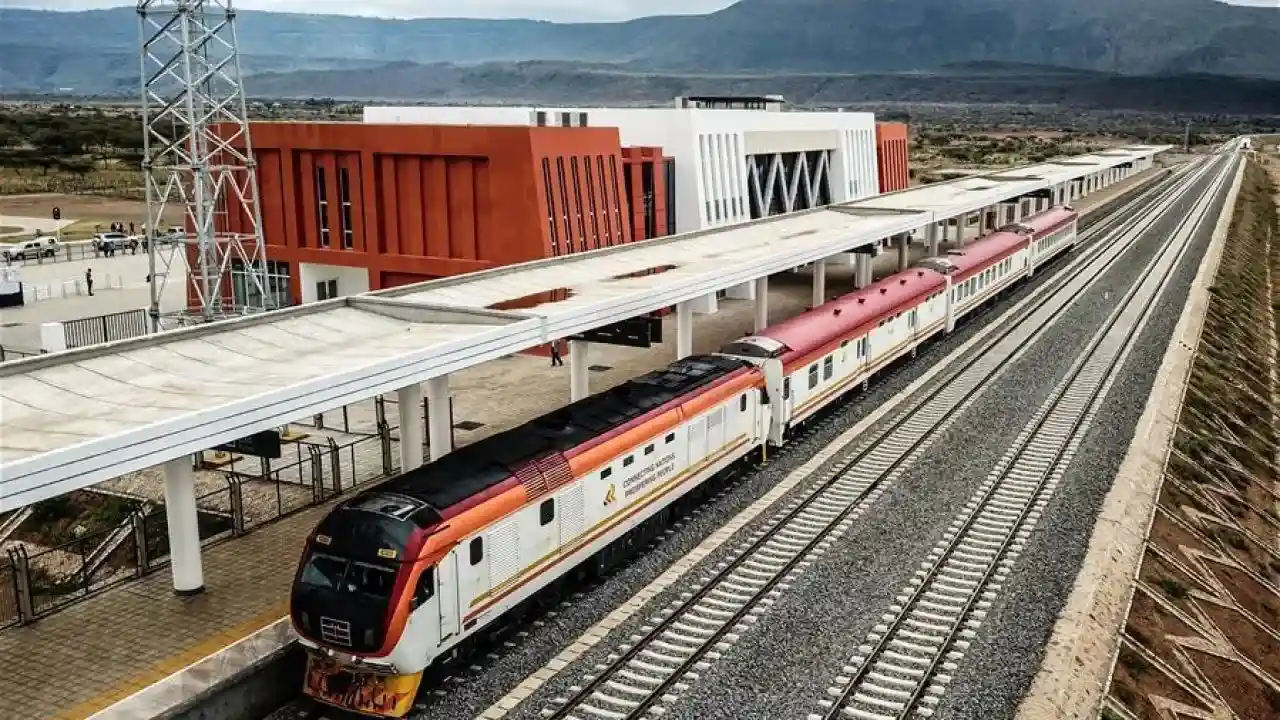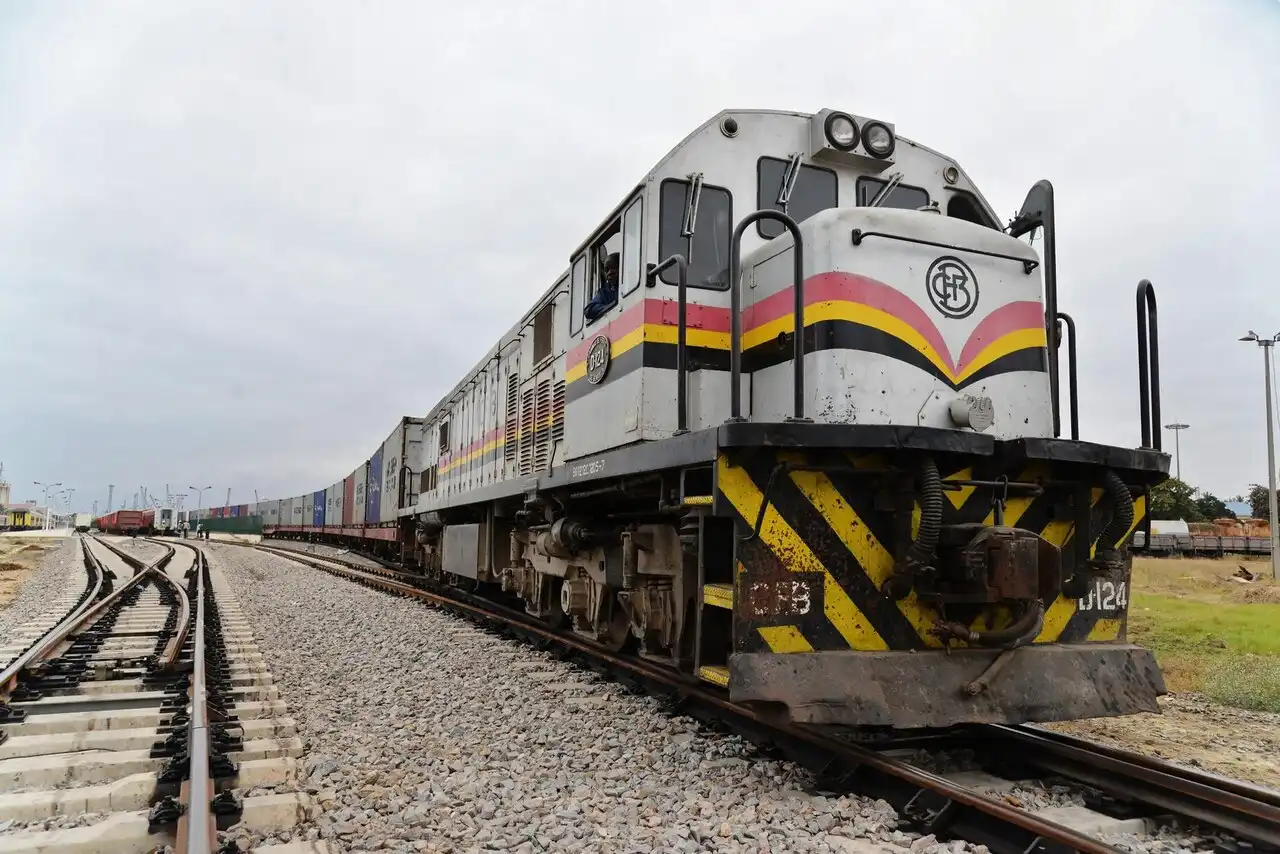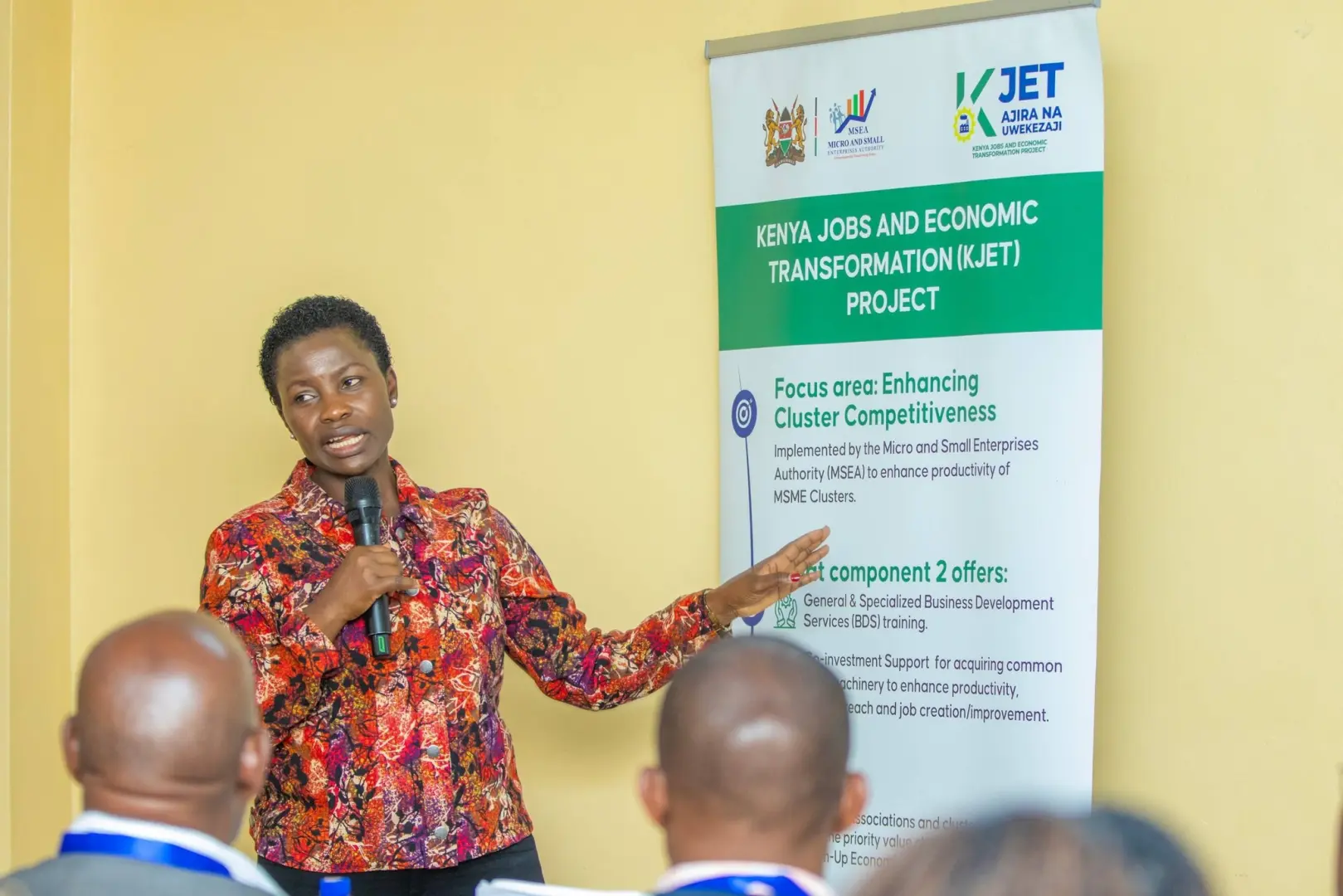After a decade of accumulating air miles between Entebbe, Nairobi and Beijing, officials in Kampala say the wait is over and a modern rail link between Uganda and the global value chains through Kenya – its main seaport gateway– is taking shape as the country’s standard gauge railway (SGR) nears construction stage.
Build the future you deserve. Get started with our top-tier Online courses: ACCA, HESI A2, ATI TEAS 7, HESI EXIT, NCLEX-RN, NCLEX-PN, and Financial Literacy. Let Serrari Ed guide your path to success. Enroll today.
Synchronized Strategy Emerges After Years of Setbacks
Uganda and Kenya have set their sights on a simultaneous finish for their ongoing projects, as neighbours aim to bury financing ghosts of the past, enhance regional connectivity to ease trade and facilitate seamless movement of cargo from Mombasa port to the hinterland. This coordinated approach represents a fundamental shift from the fragmented, country-by-country implementation that previously characterized the ambitious East African Railway Master Plan.
The synchronized strategy emerges after years of frustration, particularly Uganda’s prolonged wait for Kenya to complete its portion of the railway to the border. The breakthrough came when Uganda changed course and secured Turkish firm Yapi Merkezi as its contractor, while Kenya simultaneously received guarantees to borrow $6 billion to extend the railway to Malaba.
Business Community Cautiously Optimistic
For the business community, there is cautious optimism as anticipation continues to build, that the long awaited SGR project will finally start and be delivered on schedule to provide a reliable and price competitive mode of transport. “Reliability is our selling point,” said Yolisa Khantwane, Maersk Country Manager for Uganda and South Sudan. “Our clients don’t want rail right now because it’s not reliable. But after SGR, they would change their perception about railway transport one hundred percent.”
Currently, Maersk moves only one percent of its cargo by Uganda’s metre gauge rail (MGR) due to reliability concerns. On the Kenya side, the current system requires transporting goods by SGR from Mombasa to Naivasha, then shifting to MGR up to the border, before loading onto trucks for delivery to Kampala—a logistical headache that the new integrated system aims to eliminate.
Uganda’s €2.7 Billion Turkish Partnership
Gen Edward Katumba Wamala, Uganda’s Minister of Works and Transport, said the government learned a bitter lesson from previous delays and has now taken measures to avoid further setbacks by advancing initial project funds before reaching financial close for €2.7 billion ($3.16 billion) early next year.
“For over a decade, progress was slowed primarily by financing constraints. Today, I am pleased to report that we have turned that corner. The contract is in partial implementation, the contractor is on the ground and preliminary and enabling works are underway,” Wamala stated.
Complex Financing Structure
Citibank serves as the transaction arranger for Uganda’s complex financing deal involving several export credit agencies (ECAs) expected to meet 60 percent of the project’s funding, with development financial institution credits footing 25 percent while the government of Uganda covers 15 percent. The ECAs involved in the deal represent the United Kingdom, China, Turkey and the Middle East, demonstrating the project’s international significance.
Authorities in Kampala and Yapi Merkezi target April 2026 for the actual start of construction of the 272-kilometre Malaba-Kampala stretch. “We are currently doing the design, a lot goes into that; it’s a complex project,” explained Mert Oz, Project Coordinator for the Turkish firm, addressing why construction hasn’t begun nine months since Uganda President Yoweri Museveni launched the project at Tororo railway grounds.
Kenya’s $4.45 Billion Extension Strategy
To avoid further delays, Kenya is focusing on the 475-kilometre Naivasha-Kisumu-Malaba SGR line, representing the final link needed to complete the connection to Uganda. Last month, Nairobi announced that construction of the $4.45 billion Naivasha-Kisumu-Malaba phases of the SGR is set to begin after identifying project-affected persons to give right of way and finalising the environmental impact assessment.
“Naivasha-Malaba has been a challenge but Kenya is now working on that connection. By the time we commission this line, they will also be at Malaba. In fact, the idea is that these lines will be commissioned at the same time. That’s the commitment,” said Perez Wamburu, SGR project coordinator for Uganda.
Breaking from Chinese Financing Model
The renewed momentum represents a significant departure from the original Chinese-dominated financing model that had characterized the Kenya Standard Gauge Railway project. When China’s Export-Import Bank declined to fund the extension beyond Naivasha, both countries were forced to explore alternative financing arrangements, ultimately leading to the current diversified approach involving European and Middle Eastern lenders.
Northern Corridor Integration Imperative
The SGR projects operate within the broader context of the Northern Corridor, the critical transport artery connecting landlocked East and Central African countries to the Port of Mombasa. This 1,700-kilometre corridor serves Kenya, Uganda, Rwanda, Burundi, Democratic Republic of Congo, and South Sudan, handling over 85% of East African Community trade.
Recent assessments by the Northern Corridor Transit and Transport Coordination Authority (NCTTCA) reveal that cross-border trucks still face an average of seven to ten stops per journey, with transit times from Mombasa to Kampala stretching 7-10 days—well above the regional target of five days. These inefficiencies cost regional economies an estimated $2 billion annually in lost competitiveness and higher consumer prices.
African Development Bank’s Strategic Support
The African Development Bank has been instrumental in supporting regional corridor development, having funded 25 transport corridors and constructed more than 18,000 km of roads, 27 border crossings and 16 bridges across Africa, representing a total investment of $13.5 billion. The bank’s president, Dr Akinwumi Adesina, emphasizes that “it is only via regional corridors that we will be able to move goods and services easily across the continent, reduce transport costs, encourage integration and achieve effective economic development.”
Regional Network Expansion Plans
Once construction of the Malaba-Kampala section reaches mid-point, Uganda will commence works on the northern and western routes to extend the network toward South Sudan, Rwanda and the Democratic Republic of Congo, according to Gen Wamala. This phased approach aligns with the comprehensive East African Railway Master Plan, which envisions a 2,700-kilometre network across four countries with design capacity for freight operations of up to 22 million tons annually and passenger capacity of 10 million journeys per year.
Multi-Country Coordination Mechanism
The coordination between Kenya and Uganda has attracted attention from other regional partners. In May 2024, Rwanda and the Democratic Republic of the Congo committed to join the Kenyan-Ugandan initiative and funding drive, with aims to extend the SGR to Kigali and Kisangani. This regional buy-in represents a significant departure from earlier fragmented approaches and could accelerate the realization of the full East African railway network.
Technical Specifications and Standards
The SGR projects are being built according to Chinese National Railway Class 1 standards, adopted by the Northern Corridor Integration Project (NCIP) member countries to ensure seamless integration between railways. The standardized approach includes specific technical requirements such as 850-meter arrival and departure tracks at passing loops, designed to accommodate dual locomotive operations and maximize efficiency.
These technical standards represent a dramatic upgrade from the colonial-era metre gauge railways that currently serve the region. The existing metre gauge system, built over a century ago, has deteriorated significantly due to lack of maintenance, with journey times from Nairobi to Mombasa extending to an entire day compared to 12 hours during the early 1990s.
Environmental and Wildlife Considerations
The new SGR design incorporates significant environmental improvements over the existing railway infrastructure. Viaducts and embankments are elevated above ground level, allowing wildlife to pass underneath—a substantial improvement over the colonial Uganda Railway that was built at ground level and caused frequent wildlife collisions, particularly in the transportation corridor between Tsavo East and West National Parks.
Fuel your success with knowledge that matters. Enroll in our Online programs: ACCA, HESI A2, ATI TEAS 7, HESI EXIT, NCLEX-RN, NCLEX-PN, and Financial Literacy. Join Serrari Ed now and take control of your future.
Economic Impact and Trade Facilitation
Waiswa Bageya, Permanent Secretary in Uganda’s Ministry of Works and Transport, characterizes the SGR as long overdue for the Ugandan economy, which has borne the heavy burden of high transport and logistics costs for decades. Current transport costs along the Northern Corridor significantly exceed global averages, limiting the competitiveness of landlocked countries in international markets.
The railway network is expected to dramatically reduce these costs by providing high-capacity, efficient cargo transport from the port to inland destinations. Economic projections suggest the integrated system could reduce transport times by up to 60% while cutting costs by 30-40%, providing substantial benefits to businesses throughout the region.
Employment and Skills Development
The Mombasa-Nairobi SGR, completed in 2017, created more than 65,000 local jobs during construction, though most were temporary. The expanded network across Kenya and Uganda is expected to generate similar employment opportunities while also creating permanent positions in railway operations, maintenance, and associated logistics services.
The projects also include significant technology transfer components, with local workers receiving training in modern railway construction and operation techniques. This skills development represents a long-term benefit that extends beyond the immediate construction period.
Financing Innovation and Risk Mitigation
The current financing structure represents a significant evolution from earlier models that relied heavily on single-source funding. Uganda’s approach, involving multiple export credit agencies from different regions, provides greater financial resilience while reducing dependency on any single lender.
The diversified financing structure also addresses previous concerns about debt sustainability that had complicated earlier negotiations with Chinese lenders. By spreading risk across multiple institutions and including development finance components, both countries have created more manageable debt profiles.
Public-Private Partnership Elements
The projects incorporate various public-private partnership elements, particularly in operations and maintenance. Kenya’s SGR operations are managed by Africa Star Railway Operations Company (Afristar), a subsidiary of China Road and Bridge Corporation, under a management contract with Kenya Railways Corporation. Similar arrangements are being explored for the Uganda portion, potentially creating integrated management across the full corridor.
Regional Integration Benefits
The synchronized completion of both SGR segments represents more than infrastructure development—it embodies the practical realization of East African integration aspirations. The East African Community’s infrastructure development strategy emphasizes cross-border connectivity as fundamental to regional economic integration and market expansion.
Current intra-regional trade within East Africa remains below potential, partly due to high transport costs and infrastructure bottlenecks. The SGR network is expected to facilitate increased trade flows by reducing transaction costs and improving reliability, supporting the implementation of the African Continental Free Trade Area (AfCFTA) within the region.
Tourism and Passenger Services
Beyond freight transport, the SGR network will significantly enhance passenger services throughout the region. The Madaraka Express, operating between Mombasa and Nairobi since 2017, has exceeded ridership expectations, carrying 2 million passengers in its first 17 months of operation.
Extension of passenger services to Uganda and beyond will create new tourism opportunities while facilitating business travel and regional mobility. The improved connectivity is expected to boost tourism in western Kenya and the Lake Victoria region, supporting economic diversification beyond traditional sectors.
Technology and Digital Integration
Modern SGR systems incorporate advanced digital technologies for traffic management, safety systems, and cargo tracking. These systems enable real-time monitoring of train movements, cargo status, and maintenance requirements, significantly improving operational efficiency compared to traditional railway systems.
The digital infrastructure also supports integration with port management systems at Mombasa, enabling seamless cargo tracking from ship to final destination. This end-to-end visibility reduces administrative burdens and improves supply chain reliability for businesses using the corridor.
Future Automation Potential
The standardized technical specifications and digital infrastructure provide a foundation for future automation and enhanced operational efficiency. As traffic volumes grow, the system can accommodate more sophisticated signaling and control systems, potentially supporting increased train frequencies and higher capacity utilization.
Challenges and Risk Management
Despite the renewed momentum, the projects face several ongoing challenges. Cross-border coordination remains complex, requiring continuous collaboration between different regulatory frameworks, customs procedures, and operational standards. The success of the integrated system depends on harmonizing these various elements across national boundaries.
Climate change also presents long-term challenges, with increasing frequency of extreme weather events potentially affecting railway operations. The new infrastructure incorporates climate resilience features, but ongoing maintenance and adaptation will be required to ensure long-term sustainability.
Debt Sustainability Considerations
While the diversified financing structure reduces some risks, both countries must carefully manage the additional debt burden associated with these major infrastructure investments. Economic benefits from improved trade facilitation and reduced transport costs must materialize as projected to justify the significant financial commitments involved.
Regular monitoring and evaluation mechanisms are being established to track project performance against economic targets, enabling course corrections if necessary to ensure debt sustainability and economic viability.
Continental Context and Global Significance
The Kenya-Uganda SGR coordination occurs within a broader continental context of infrastructure development and regional integration. Similar railway projects are underway or planned across Africa, including the Tanzania SGR, Ethiopia-Djibouti Railway, and various networks in West and Southern Africa.
The success of the East African model could influence approaches to cross-border infrastructure coordination elsewhere on the continent, potentially accelerating the realization of continental integration objectives under the African Union’s Agenda 2063.
China’s Belt and Road Initiative Impact
While moving away from exclusive Chinese financing, the projects remain influenced by China’s Belt and Road Initiative standards and approaches. The technical specifications and operational models developed through the Kenya SGR continue to shape the broader regional network, representing a lasting impact of Chinese infrastructure development strategies in Africa.
The diversification of financing sources while maintaining technical compatibility demonstrates how African countries are adapting international development approaches to local needs and circumstances.
Future Outlook and Timeline
Both countries remain committed to their synchronized completion timeline, with construction activities expected to intensify significantly in 2026. Kenya’s Cabinet Secretary for Roads and Transport, Davis Chirchir, recently emphasized the strategic importance of completing these connections, noting their role in positioning East Africa as a dynamic trade gateway.
The projects’ success will be measured not only by infrastructure completion but also by their impact on trade facilitation, economic growth, and regional integration. Early indicators suggest growing business confidence, with logistics companies already planning operational adjustments to take advantage of the improved connectivity.
Long-term Vision Realization
Successful completion of both SGR segments will mark a significant step toward realizing the East African Railway Master Plan’s vision of seamless regional connectivity. The integrated network could serve as a foundation for further expansion to other regional partners and support the development of industrial corridors along the railway routes.
The synchronized approach pioneered by Kenya and Uganda may become a model for other cross-border infrastructure projects throughout Africa, demonstrating how regional coordination can overcome financing and implementation challenges that have historically limited continental integration efforts.
Conclusion: Transforming Regional Transport Architecture
The parallel completion of Kenya and Uganda’s SGR segments represents more than infrastructure development—it embodies a new approach to regional integration that prioritizes coordination, diversified financing, and synchronized implementation. After years of false starts and financing challenges, both countries have demonstrated renewed commitment to completing this transformative regional connectivity project.
For businesses throughout East Africa, the prospect of reliable, efficient rail transport from Mombasa to Kampala and beyond offers unprecedented opportunities for market expansion and cost reduction. For the region as a whole, successful implementation could accelerate economic integration and position East Africa as a more competitive player in global trade networks.
The coming months will be critical as both countries move from planning to active construction, requiring sustained political commitment, effective project management, and continued international support. Success will validate the synchronized approach and potentially influence similar coordination efforts across the continent, contributing to Africa’s broader infrastructure development and integration aspirations.
As construction activities intensify in 2026, the progress of both SGR segments will be closely watched as indicators of East Africa’s ability to deliver on its regional integration commitments and transform its transport infrastructure for enhanced competitiveness in global markets.
Ready to take your career to the next level? Join our Online courses: ACCA, HESI A2, ATI TEAS 7 , HESI EXIT , NCLEX – RN and NCLEX – PN, Financial Literacy!🌟 Dive into a world of opportunities and empower yourself for success. Explore more at Serrari Ed and start your exciting journey today! ✨
Track GDP, Inflation and Central Bank rates for top African markets with Serrari’s comparator tool.
See today’s Treasury bonds and Money market funds movement across financial service providers in Kenya, using Serrari’s comparator tools.
Photo source: Google
By: Montel Kamau
Serrari Financial Analyst
9th September, 2025
Article, Financial and News Disclaimer
The Value of a Financial Advisor
While this article offers valuable insights, it is essential to recognize that personal finance can be highly complex and unique to each individual. A financial advisor provides professional expertise and personalized guidance to help you make well-informed decisions tailored to your specific circumstances and goals.
Beyond offering knowledge, a financial advisor serves as a trusted partner to help you stay disciplined, avoid common pitfalls, and remain focused on your long-term objectives. Their perspective and experience can complement your own efforts, enhancing your financial well-being and ensuring a more confident approach to managing your finances.
Disclaimer: This article is for informational purposes only and does not constitute financial advice. Readers are encouraged to consult a licensed financial advisor to obtain guidance specific to their financial situation.
Article and News Disclaimer
The information provided on www.serrarigroup.com is for general informational purposes only. While we strive to keep the information up to date and accurate, we make no representations or warranties of any kind, express or implied, about the completeness, accuracy, reliability, suitability, or availability with respect to the website or the information, products, services, or related graphics contained on the website for any purpose. Any reliance you place on such information is therefore strictly at your own risk.
www.serrarigroup.com is not responsible for any errors or omissions, or for the results obtained from the use of this information. All information on the website is provided on an as-is basis, with no guarantee of completeness, accuracy, timeliness, or of the results obtained from the use of this information, and without warranty of any kind, express or implied, including but not limited to warranties of performance, merchantability, and fitness for a particular purpose.
In no event will www.serrarigroup.com be liable to you or anyone else for any decision made or action taken in reliance on the information provided on the website or for any consequential, special, or similar damages, even if advised of the possibility of such damages.
The articles, news, and information presented on www.serrarigroup.com reflect the opinions of the respective authors and contributors and do not necessarily represent the views of the website or its management. Any views or opinions expressed are solely those of the individual authors and do not represent the website's views or opinions as a whole.
The content on www.serrarigroup.com may include links to external websites, which are provided for convenience and informational purposes only. We have no control over the nature, content, and availability of those sites. The inclusion of any links does not necessarily imply a recommendation or endorsement of the views expressed within them.
Every effort is made to keep the website up and running smoothly. However, www.serrarigroup.com takes no responsibility for, and will not be liable for, the website being temporarily unavailable due to technical issues beyond our control.
Please note that laws, regulations, and information can change rapidly, and we advise you to conduct further research and seek professional advice when necessary.
By using www.serrarigroup.com, you agree to this disclaimer and its terms. If you do not agree with this disclaimer, please do not use the website.
www.serrarigroup.com, reserves the right to update, modify, or remove any part of this disclaimer without prior notice. It is your responsibility to review this disclaimer periodically for changes.
Serrari Group 2025
















